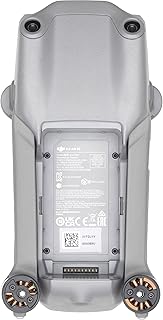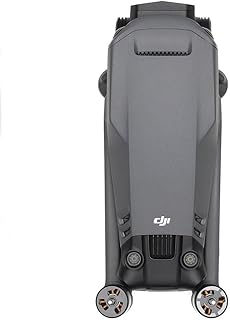The Ultimate Guide to Using the RotorLogic Drone
This guide will equip you with the knowledge and skills needed to master your RotorLogic drone, ensuring safe and enjoyable flights.
I. Introduction:
The RotorLogic drone offers a range of features and functionalities, making it suitable for both beginners and experienced pilots. This guide covers:
* Understanding the Drone: Familiarize yourself with the different parts and their functions.
* Pre-Flight Checks: Learn how to prepare your drone for safe takeoff.
* Taking Off and Landing: Master the basics of controlling your drone in the air.
* Flight Modes: Explore different flight modes and their applications.
* Camera and Photography: Learn to capture stunning aerial shots.
* Maintenance and Troubleshooting: Keep your drone in tip-top condition.
* Safety and Regulations: Understand and follow essential safety guidelines.
II. Understanding the Drone:
* RotorLogic Drone Parts: Identify the main components like propellers, motors, battery, camera, remote control, and landing gear.
* Drone Features: Explore the functionalities, including GPS navigation, intelligent flight modes, obstacle avoidance, and return-to-home (RTH) feature.
* Remote Control: Familiarize yourself with the controls, buttons, and their respective functions.
III. Pre-Flight Checks:
* Battery Status: Ensure the battery is fully charged and in good condition.
* Propellers: Inspect the propellers for damage or wear.
* Camera Lens: Clean the camera lens to ensure clear image capture.
* Gimbal: Check if the gimbal is functioning properly.
* Flight Area: Choose a safe and legal location for your flight.
IV. Taking Off and Landing:
* Calibration: Follow the calibration procedure for your drone's sensors and compass.
* Takeoff: Gently lift the drone from the ground and maintain stable altitude.
* Landing: Control the drone's descent and land smoothly on a flat surface.
* Hovering: Practice maintaining a steady position in the air.
V. Flight Modes:
* Beginner Mode: This mode limits the drone's speed and control, making it ideal for beginners.
* Sport Mode: Offers more control and responsiveness, perfect for experienced pilots.
* GPS Mode: Enables precise positioning and RTH function.
* Intelligent Flight Modes: Explore features like follow me, point of interest, and waypoint navigation.
VI. Camera and Photography:
* Camera Settings: Adjust settings like resolution, frame rate, and exposure to capture the best possible shots.
* Gimbal Control: Use the gimbal to pan, tilt, and roll the camera for creative shots.
* Aerial Photography Tips: Learn techniques for capturing stunning aerial landscapes, cityscapes, and wildlife.
VII. Maintenance and Troubleshooting:
* Regular Cleaning: Keep the drone and its components clean to ensure optimal performance.
* Battery Care: Charge the battery according to manufacturer instructions and store it properly.
* Propeller Replacement: Replace damaged or worn-out propellers.
* Troubleshooting: Learn to identify and address common drone issues.
VIII. Safety and Regulations:
* Flight Rules: Understand the FAA regulations for drone operation in the United States.
* Drone Registration: Register your drone with the FAA if required.
* No-Fly Zones: Avoid flying in restricted areas like airports or military installations.
* Responsible Flight: Fly responsibly, keeping a safe distance from people, property, and aircraft.
IX. Additional Resources:
* RotorLogic Website: Consult the official website for user manuals, firmware updates, and support.
* Online Forums: Join forums and communities for drone enthusiasts to exchange knowledge and share experiences.
* YouTube Tutorials: Watch informative videos to learn advanced techniques and troubleshoot issues.
X. Conclusion:
By following this guide and practicing regularly, you'll develop the skills and knowledge needed to fly your RotorLogic drone safely and efficiently. Remember to always prioritize safety, follow regulations, and have fun exploring the skies!


